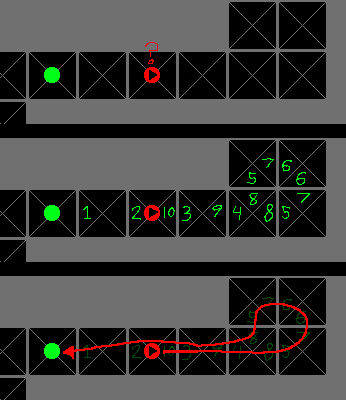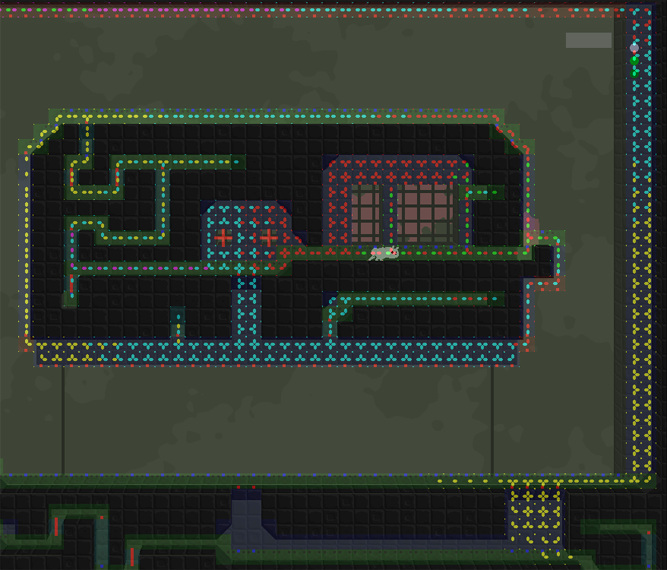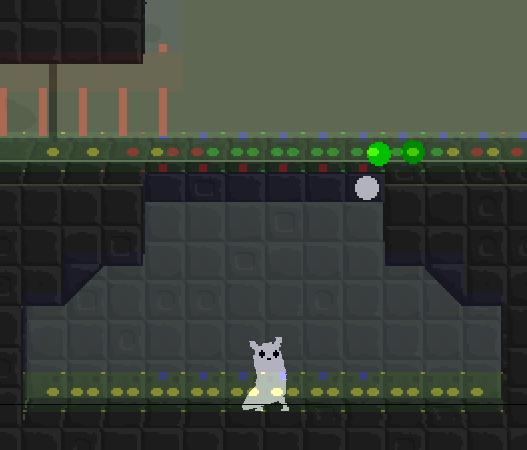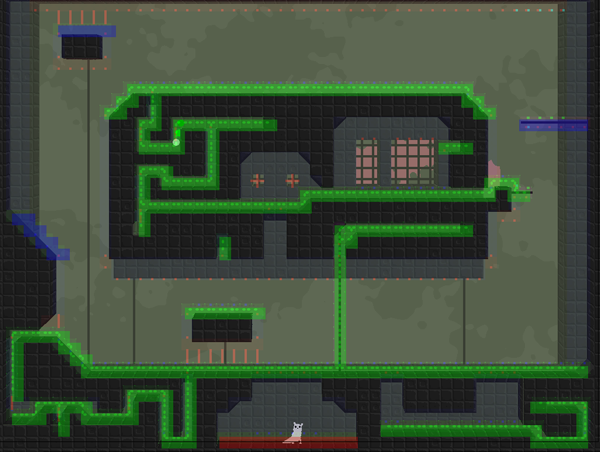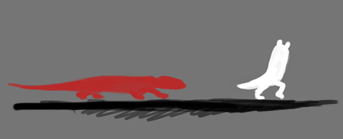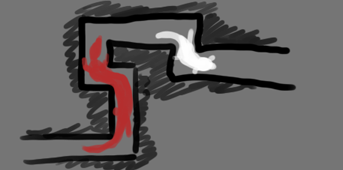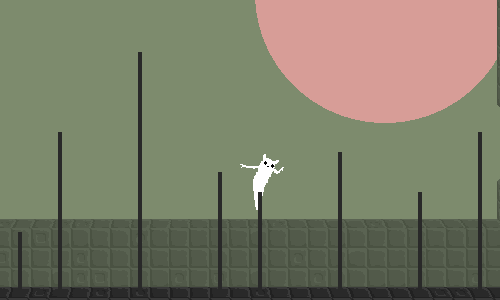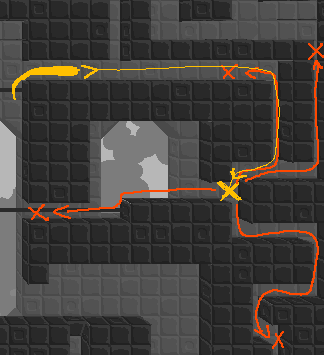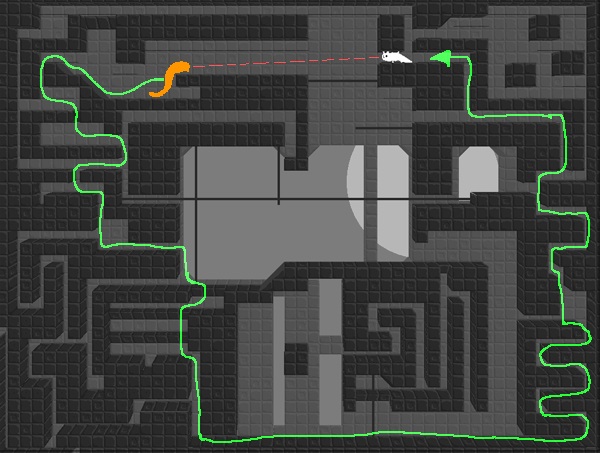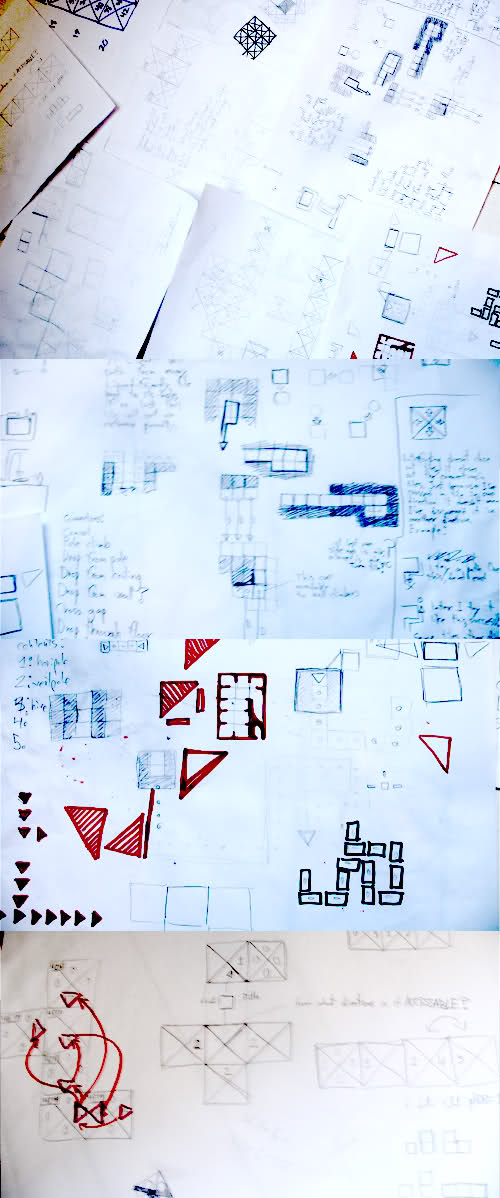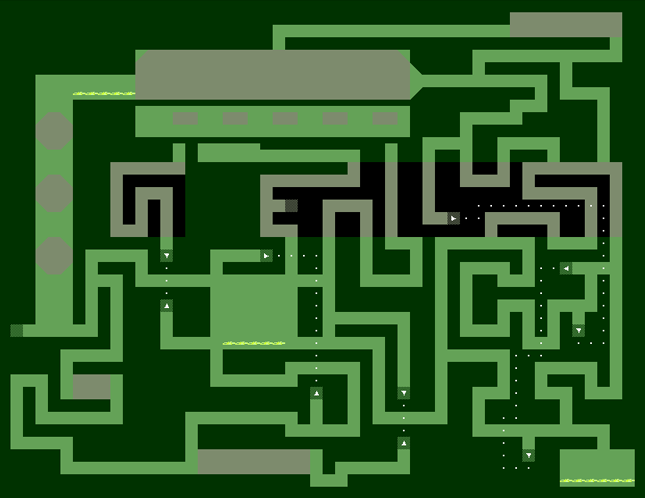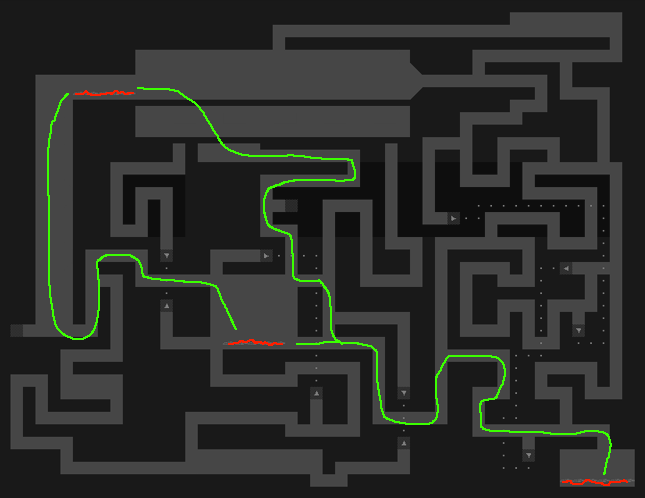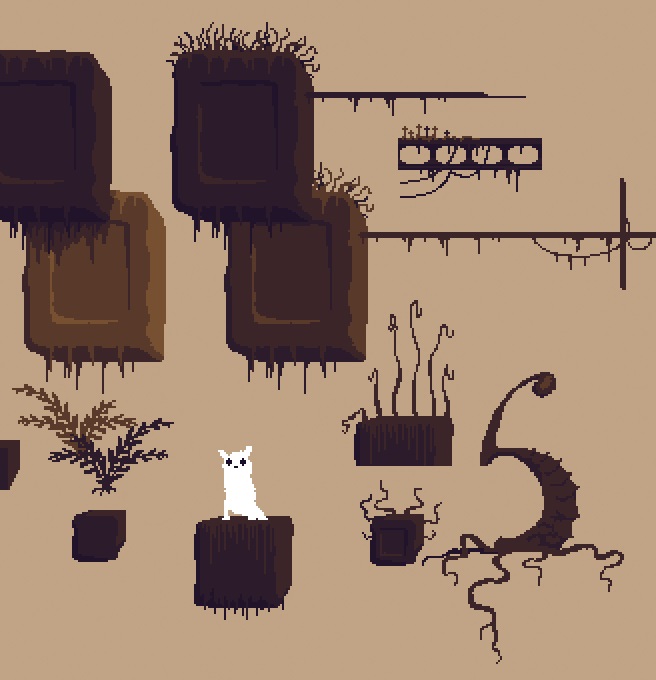 | JLJac on March 24, 2012, 12:44:52 PM (Last Edit: May 13, 2017, 12:09:58 PM): |
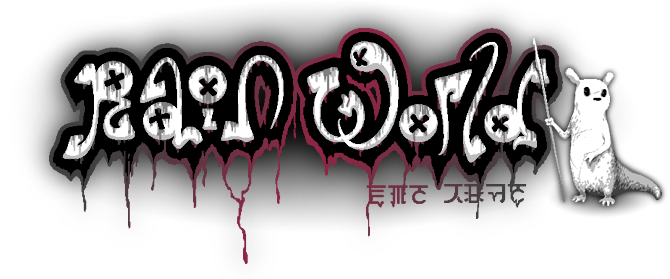
| Rain World is a survival platformer set in an abandoned industrial environment ravaged by a shattered ecosystem. Bone-crushingly intense rains pound the surface, making life as we know it almost impossible. The creatures in this world hibernate most of the time, but in the few brief dry periods they go out in search of food. You are a nomadic slugcat, both predator and prey in this land. You must hunt enough food to survive another cycle of hibernation. Other — bigger — creatures have the same plan. |
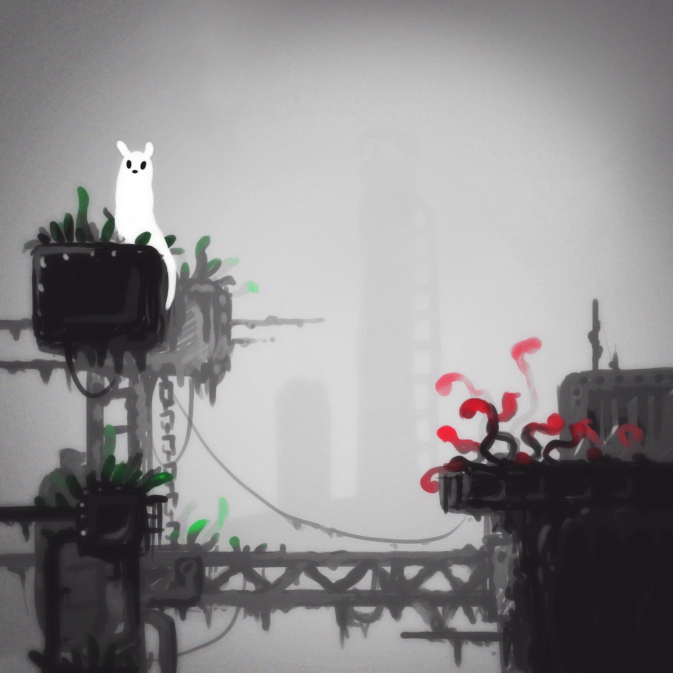
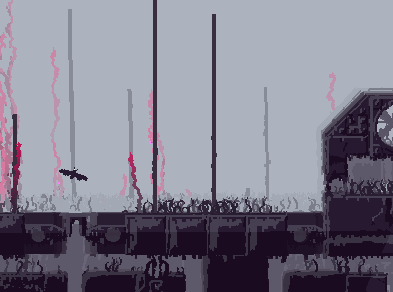

The gameplay of Rain World consists of fast paced sneaking and action. The enemies are incredibly difficult (though not impossible) to defeat through direct confrontation. Instead of being easily killable they have been made intelligent enough to be interesting opponents in stealth situations.
Ironically an entity that is stupid enough can be difficult to outsmart. The goal of the Rain World enemies is the opposite of that, being smart enough to be outwitted. This is why a lot of the development has been put towards AI. It makes for interesting situations where you get to measure your wit against an enemy that it's actually satisfying to trick and deceive.
Apart from AI, I have had a lot of fun experimenting with procedural animation. The creatures of Rain World are not animated by traditional means, but rather consist of a few freely moving pieces that are interconnected and rendered as a soft body.
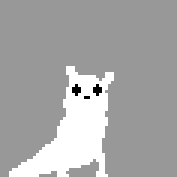
Alongside the game I've been working on a stand alone level editor, which uses a voxel-like method to create graphics. The levels are collages of hand-drawn elements, molded together by filters into one coherent graphic.
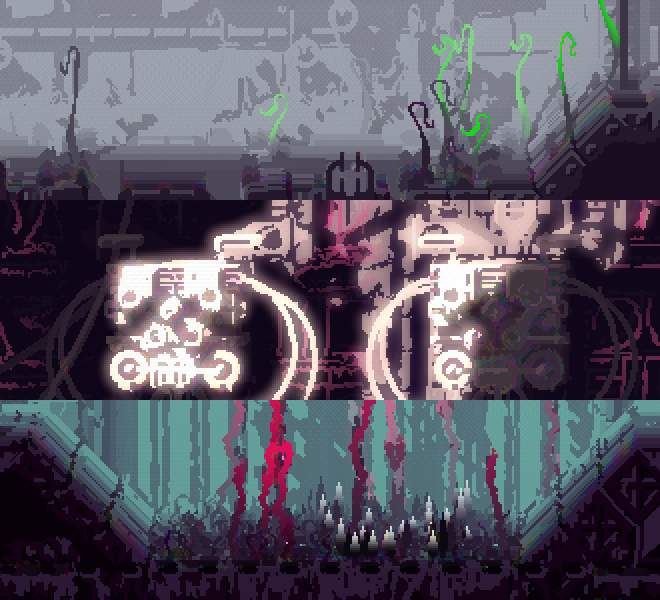
For the music and soundscape of Rain World, I have the excellent James to rely on.
If you find the project interesting, please feel free to ask, suggest, comment or otherwise contribute. For those of you who are interested in technical stuff, feel free to plough through the devlog! Below follows the original first devlog entry from 2012.
Thanks for your time!
Rain World is now Kickstarting!
Hi! Maze Runner is of course a working title.
A while ago I posted a movement prototype in the feedback section. Since then I have worked some more on the project, starting to turn it into a game.
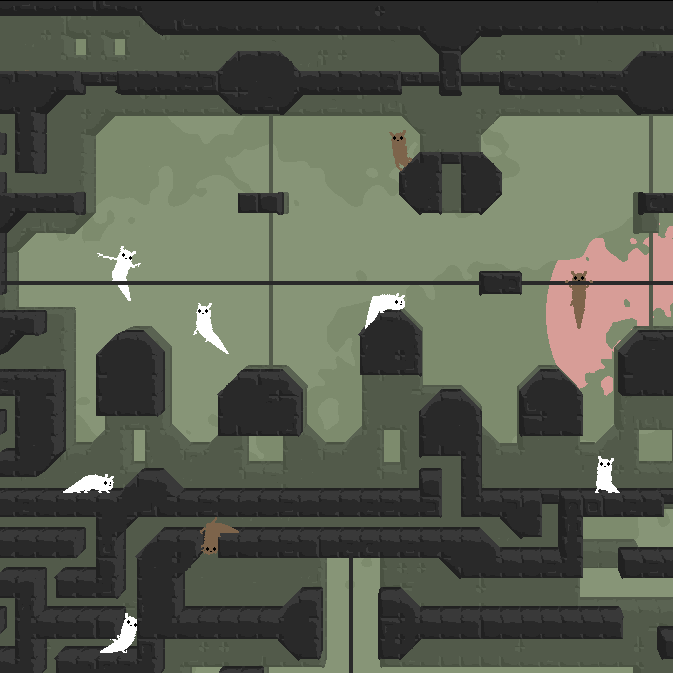
I haven't started on the visuals yet, and the game will probably look very different from this screen shot, but the movement of the player will be mostly the same.
I decided to start a dev log to keep track of my progress and keep myself motivated. I work at the game at a low but steady pace, and will hopefully be able to post updates every so often.
The Game
Try out the prototype to get a feel for what kind of basic mechanics I'm working with. More on that to be found in the old thread. More moves are to be added, such as balancing on poles, maybe some gripping mechanics, stuff like that. The core of the game is the movement of the player character in the environment.
The game will have three types of creatures in it. I won't go in to detail on how I plan to design them visually, that's not entirely worked out yet and will hopefully be an exciting surprise. Together the creatures will form a little eco system, where creature B eats creature A and creature C eats creature B. B, the player, is in the middle of this food chain, and the gameplay will consist of trying to hunt while at the same time avoiding to be eaten.

A is a flying creature, that can move quickly and reach every part of the map.
B, let's call it "the Bear" because of its ears, is a running and jumping creature, with medium mobility and probably also access to most of the map, as maps will be designed mainly from this creature's perspective. This is the player avatar in the game world.
C, let's call it "the Croc" is a crawling, climbing creature that can't jump, and is somewhat less mobile than the bear. This one will come in a few sub-species, some of which will be capable of wall climbing, increasing access the different areas of the map. They will have different stats and abilities and be threatening in different ways.
The game will work with one or more players sitting at the same computer. I like 2D, single screen multiplayer games as they according to me have all the feats of a board game as well as those of a computer game. The players have complete overview of the play area, and can shout stuff at each other while interacting in the game world. However I felt that my last game lost a bit of its potential audience due to being multiplayer only, so this one will be playable alone as well. The players will be playing against the computer units, but some competive elements might be doable as well.
The level editor
I love level editors, and especially did when I was a kid and couldn't really make actual games myself. I've been doing some work on the level editor already, and it seems to be coming together nicely.
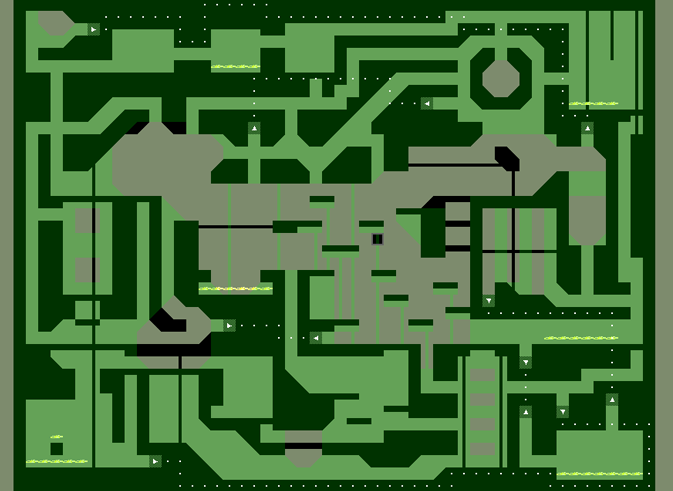
It's fun to make and play levels together with friends, and I've made the level editor so that two or more people will be able to work at the same level simultaneously.
What's going on right now?
AI, AI and more AI... path finding, to be specific.
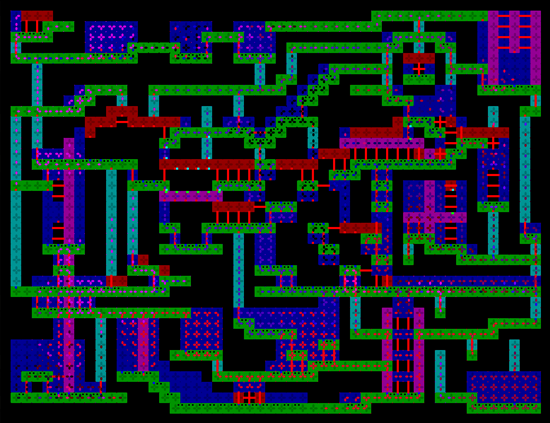
To be even more specific, it's the path finding of unit C that's a hassle. Thing is, C is not supposed to be able to reverse. Unless it's really stuck it should move forward, trying to find a way that doesn't require moving backwards into its own body. As anyone who has worked with an A* knows the main thing is crossing out tiles, like "OK, this one is checked, now I don't have to think about it again". But, if this unit is moving to a target behind it, it has to start moving away from the target until it finds a turning place, and then move back over the same tiles towards its target.
This is difficult, especially as even a conventional A* can be a sort of complicated matter... And yeah, both the start and goal positions are constantly moving and I can't afford to calculate the entire path in one frame, so it has to be realtime... And different crocs have access to different tiles... This has been, and is, very very hard. However, I'm starting to see the light at the end of the tunnel, which is why I'm going online with this now. Hopefully from now on every single update won't be about croc path finding, as it would if I started two weeks ago.
The combination of giving the user access to a level editor and having autonomous units moving around in the environments is an interesting challange. I don't want the user to be required to place "flags" of any sort, you're supposed to be able to simply create a level and then have the units move around in it in a sensible way. Moving around without reversing, that is... Well, enough on that.
The development so far has been very technical, and will probably continue to be for a while, but I'm originally an art guy and I'm much looking forward to creating some juicy sounds and visuals for this.
I hope you find the project interesting, and am looking forward to your comments, suggestions and questions.
Thanks for your time!
 —
— 
